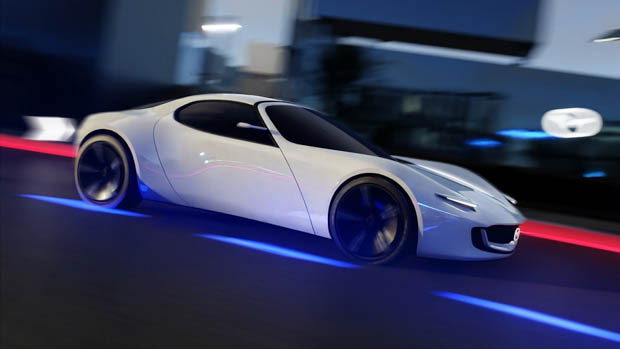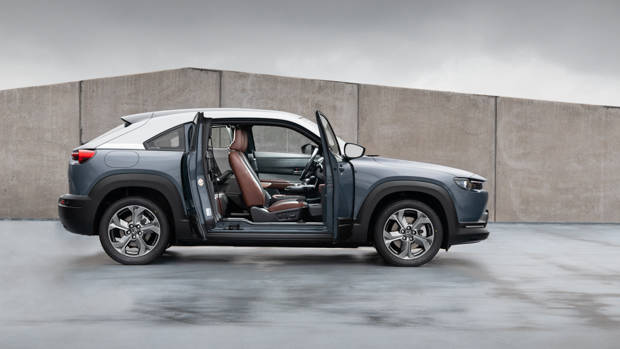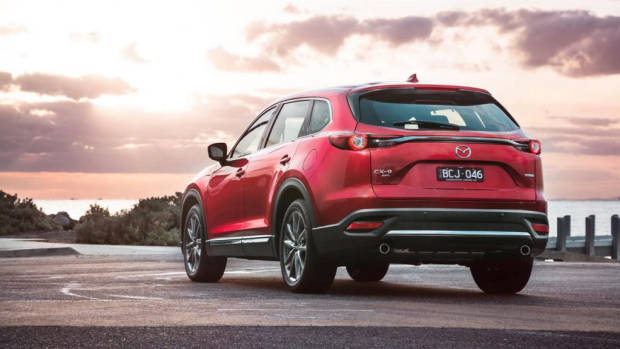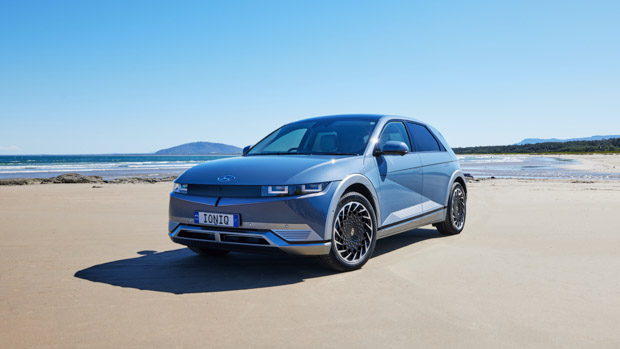-
Car Reviews
- All reviews
- Midsize SUVs
- Small cars
- Utes
- Small SUVs
- Large SUVs
- Large cars
- Sports SUVs
- Sports cars
- Vans
Latest reviews
- Car News
-
Car Comparisons
Latest comparisons
- Chasing Deals
The Japanese brand will build dedicated EVs later than some rivals with the first models coming around 2025
The dedicated electric vehicle (EV) platform that Mazda will launch in 2025 is being engineered to be highly scalable, allowing the brand to build small, midsize and large cars and SUVs with just one architecture.
Mazda will be slower to release a dedicated EV platform than most brands as it slowly phases out combustion engines in favour of hybrids this decade, while simultaneously working on a range of new EVs that will be released on the new chassis between 2025 and 2030.
Speaking with Chasing Cars, Mazda Corporation director and senior managing executive officer Yasuhiro Aoyama shared more details about the company’s Skyactiv EV scalable architecture that will debut in 2025.
Japan’s Mazda Corporation has committed to spending about $16 billion AUD on building the new platform that Chasing Cars has learned can support cars ranging broadly in size, from the dimensions of today’s Mazda 2 hatchback through to the CX-9 large SUV.
“The [EV platform] wheelbase is variable,” he confirmed. “Technologically-wise, we can derive vehicles up to the largest SUV, just as we [do currently], with the same architecture from Mazda 2 to Mazda CX-9. The same knowledge and practices will hold with the common architecture,” Aoyama said.
However, Aoyama made clear that Mazda would initially focus on releasing EV models in segments where there was clear potential for success – as high sales volumes would drive down prices for customers.
“From a business perspective, we need to take into consideration different [factors]. Initially, we need to start from [EV] segments with the largest volume, because we need volume to [increase] the affordability of EVs,” he said.
“Secondly, concerning the short-term battery cost trend, we need to start from the appropriate segment at a cost level that can be affordable and viable from a business perspective.”
Many manufacturers currently see EV volume in the midsize and large SUV segments – the vehicle classes that families usually buy from.
However, Mazda has indicated that it sees value in pursuing more niche EV shapes in future – including by teasing an electric sports car sized like an MX-5 convertible called the Vision Study Model at the brand’s recent mid-term strategy update presentation.
Mazda has long been favourable towards ‘right-sizing’ vehicles and powertrains. If it hews to these principles after 2025, the brand could offer a range of smaller EVs while avoiding huge battery sizes that add weight and blunt dynamics – at the cost of range.
The marque’s sole EV on sale today – the MX-30 small SUV – is smaller, lighter and more fun to drive than most electric crossovers, but its real-world range of 200km lags the competition.
Mr Aoyama spoke to Mazda’s existing expertise in building many models – from four metres to over five metres in length – on one combustion-car platform with flexible hard points.
“The scalable architecture means setting up the right…common parts, so that we can set up the various sizes of vehicle to deploy on the same architecture,” Aoyama said.
“We can produce on one common production line, save on engineering through similarity of architecture [and] we can harmonise technology to save facility engineering and R&D costs.
“Technically-wise, [that means] setting up the right partition so that we can derive any kind of segment, any vehicle, based on that [platform],” he continued.
On the specifics of the new Skyactiv EV scalable architecture, Aoyama was reserved, but provided hints as to voltage and battery size.
Asked specifically if Mazda would build-in 800-volt capability to the Skyactiv EV platform – allowing the kind of ultra-rapid charging speeds that would compete with Hyundai and Kia’s e-GMP platform vehicles, or the Porsche Taycan – Aoyama hinted that affordability was the primary goal at first.
Several manufacturers, including the Volkswagen Group, are hedging their EV platform bets. VW’s forthcoming Scalable Systems Platform (SSP) architecture will be capable of either 400-volt or 800-volt charging depending on the price of the model.
SSP-platform cars from Volkswagen Group brands will launch at around the same time as Mazda’s first dedicated EVs, mid-decade.
Mazda may do the same, reserving lower 400-volt charging speeds for its mainstream-price models while its emerging line of Mazda Premium models could score ultra-rapid 800-volt capability.
In the real world, the difference is manifested in road trip charging times being slashed from around 40 minutes with a 400-volt car to about 20 minutes with an 800-volt vehicle.
Latest news
About Chasing cars
Chasing Cars reviews are 100% independent.
Because we are powered by Budget Direct Insurance, we don’t receive advertising or sales revenue from car manufacturers.
We’re truly independent – giving you Australia’s best car reviews.




